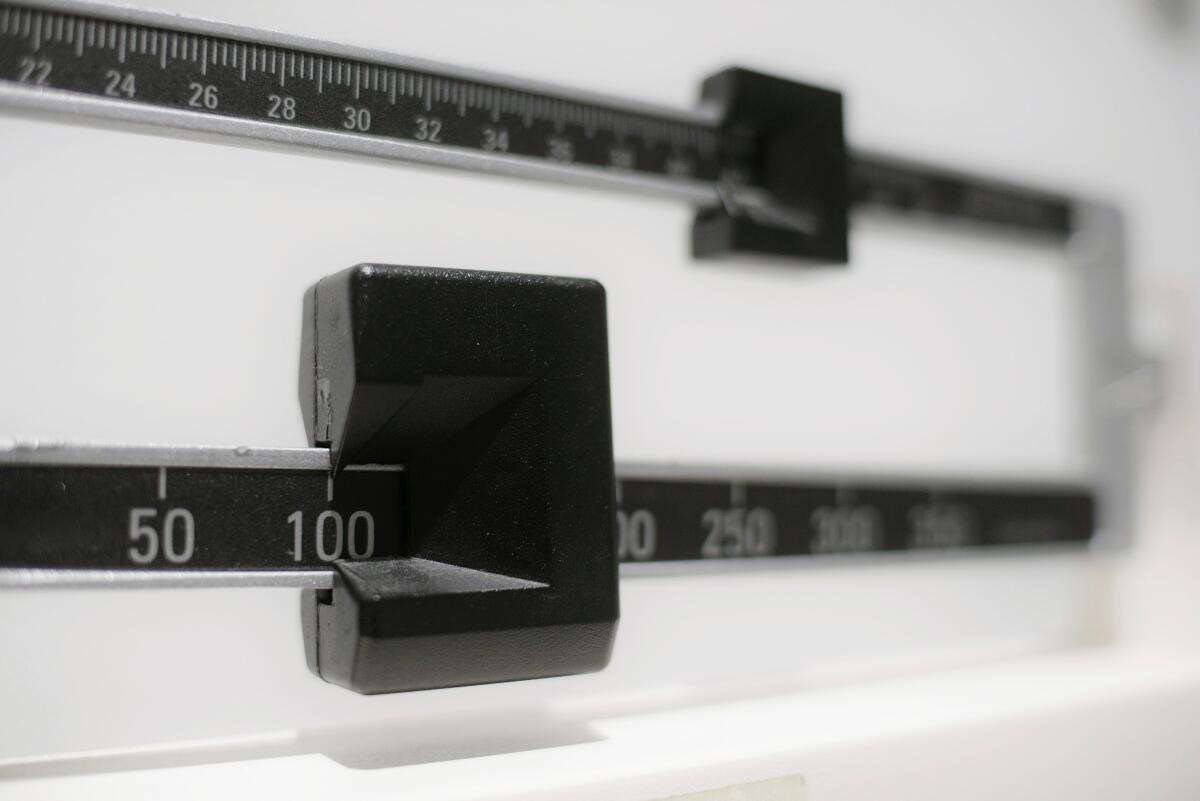Op-Ed: Do we really know what makes us fat?

We’re familiar with the pattern by now: Every few years, a new study emerges with new obesity statistics. The numbers seem shockingly high, almost impossibly high, until the next study comes along with numbers that are higher still. In the 1970s, approximately 15% of American adults met the obesity criteria. By the end of the 1980s, that 15% had grown to more than 20%. By the year 2000, we had reached 30%. Today, 42% of American adults are classified as obese, and an additional 30% are considered overweight. Whatever is happening, it is happening to a remarkable number of us.
The astonishing increase in obesity has coincided with an equally astonishing increase in diabetes, which has risen approximately 500% over the last 50 years. And diabetes is only the beginning. The obesity epidemic has put tens of millions of Americans at far greater risk for heart attacks, strokes, Alzheimer’s, many of our most deadly cancers and, as we’ve recently learned, dying of COVID-19.
Given the undeniable trend, the most shocking part of the obesity epidemic may be that few health officials or scientific authorities have paused to ask a very simple question: Is it possible that our failure to make any progress stems from a scientific oversight? Is it possible that we have misunderstood obesity this entire time?
The prevailing wisdom on obesity has not gone entirely unchallenged. Over the last two decades, a small but growing number of doctors, scientists and journalists have argued that we have, in fact, fundamentally misunderstood the science of what makes us fat. These challengers have long seemed like underdogs, rebels hurling rocks at a well-fortified scientific dogma.
But that perception may now be changing. This month, Harvard Medical School professor David Ludwig and 16 other prominent scientists, clinical researchers and public health experts published a “perspective” in the American Journal of Clinical Nutrition that spells out the problems with the current model of obesity and puts forward a possible alternative. An overdue scientific reckoning on obesity appears to be taking place.
If we’ve been slow to think in new ways about obesity, it’s probably because the prevailing model — that obesity is a problem of overeating and not exercising enough — seems so obviously true. According to this “energy-balance” obesity model, we get fatter for one simple reason: More calories are coming into our bodies than are going out. In the last decades of the 20th century, the thinking goes, more processed foods infiltrated our grocery stores and our lives. Such foods are engineered to trigger reward signals in our brains, and we end up bingeing on them. Meanwhile, our sedentary lifestyles prevent us from burning enough calories.
The authors of the Clinical Nutrition paper don’t dispute that, if someone is growing heavier, more calories, or energy, are entering that person’s body than leaving it. But, they argue, the energy-balance model only describes what happens as we gain weight; it doesn’t explain why it happens.
Specifically, the model doesn’t tell us why our fat cells are holding on to the calories we consume rather than releasing the energy to fuel the body. After all, our body fat evolved precisely so that we could take in large quantities of food and then release that energy to fuel ourselves when we are not eating. That we are not moving enough doesn’t seem to be the answer. Though moving more is certainly good for us and recommended by virtually all health experts, exercise by itself has not proved especially helpful for losing weight.
So why do we keep gaining so much weight? The Clinical Nutrition article argues that obesity is fundamentally a hormonal and metabolic issue: We become obese because our bodies secrete too much of the hormone insulin, which instructs our fat cells to take up and store fat. Insulin functions like a supervisor at a food warehouse. It directs the trucks dropping off their loads in the warehouse and then locks the doors. Our bodies may have more than enough stored fuel, but if insulin levels remain elevated, the fuel can’t escape our fat tissue to nourish the rest of the body. We begin to feel weak and hungry. And we eat more.
If this understanding of obesity is correct, the energy-balance model has obesity backward: Overeating is a response to growing fatter (that is, to our fat tissues hoarding calories) rather than an underlying cause of growing fatter. Further, whatever raises insulin levels excessively in our blood is likely to be the true culprit in obesity.
In place of the energy-balance model, the Clinical Nutrition article proposes a carbohydrate-insulin model because the pancreas releases more insulin in response to processed carbohydrates than to any other foods. Our obesity epidemic took off in the 1980s, it follows, not simply because we started to eat more calories in the form of processed food, but because we began to replace the healthy fats in our diet with refined sugars and grains.
To appreciate how obesity researchers could have missed the hormonal connection to weight gain for so long, consider that refined sugars and grains, the same molecules that elevate insulin levels, also happen to be a source of calories. The great mistake, according to proponents of the carbohydrate-insulin model, was blaming refined carbohydrates primarily for their energy content, their calories, rather than for their influence on our hormones.
For the public, scientific debates about the nuances of obesity and the way our bodies store and access energy can seem like so much squabbling over minor points. But given the link between obesity and chronic disease, there may be no single question in American life more important than which side of this debate is correct.
If the carbohydrate-insulin model is correct — and its proponents acknowledge that we need more research before saying so with absolute certainty — it suggests a radically different approach to restoring health to the nearly three-quarters of American adults who are overweight. Instead of aiming to eat fewer calories, an approach that follows from the energy-balance model and that has failed for so many of us, we should replace the refined carbohydrates in our diets with healthy fats and protein without much concern for counting calories. Such a high-fat, low-carbohydrate diet would lower insulin levels and allow our fat cells to release the calories they are hoarding.
Whether the debate among scientists leads to a revolution in how we understand the science of getting fat remains to be seen. But if our health experts continue along the same path without reconsidering whether we’ve lost our way, one thing is clear: We’ll know what to expect when the next figures on American obesity are published.
Sam Apple is the author of “Ravenous: Otto Warburg, the Nazis, and the Search for the Cancer-Diet Connection.” He teaches science writing at Johns Hopkins University.
More to Read
A cure for the common opinion
Get thought-provoking perspectives with our weekly newsletter.
You may occasionally receive promotional content from the Los Angeles Times.










